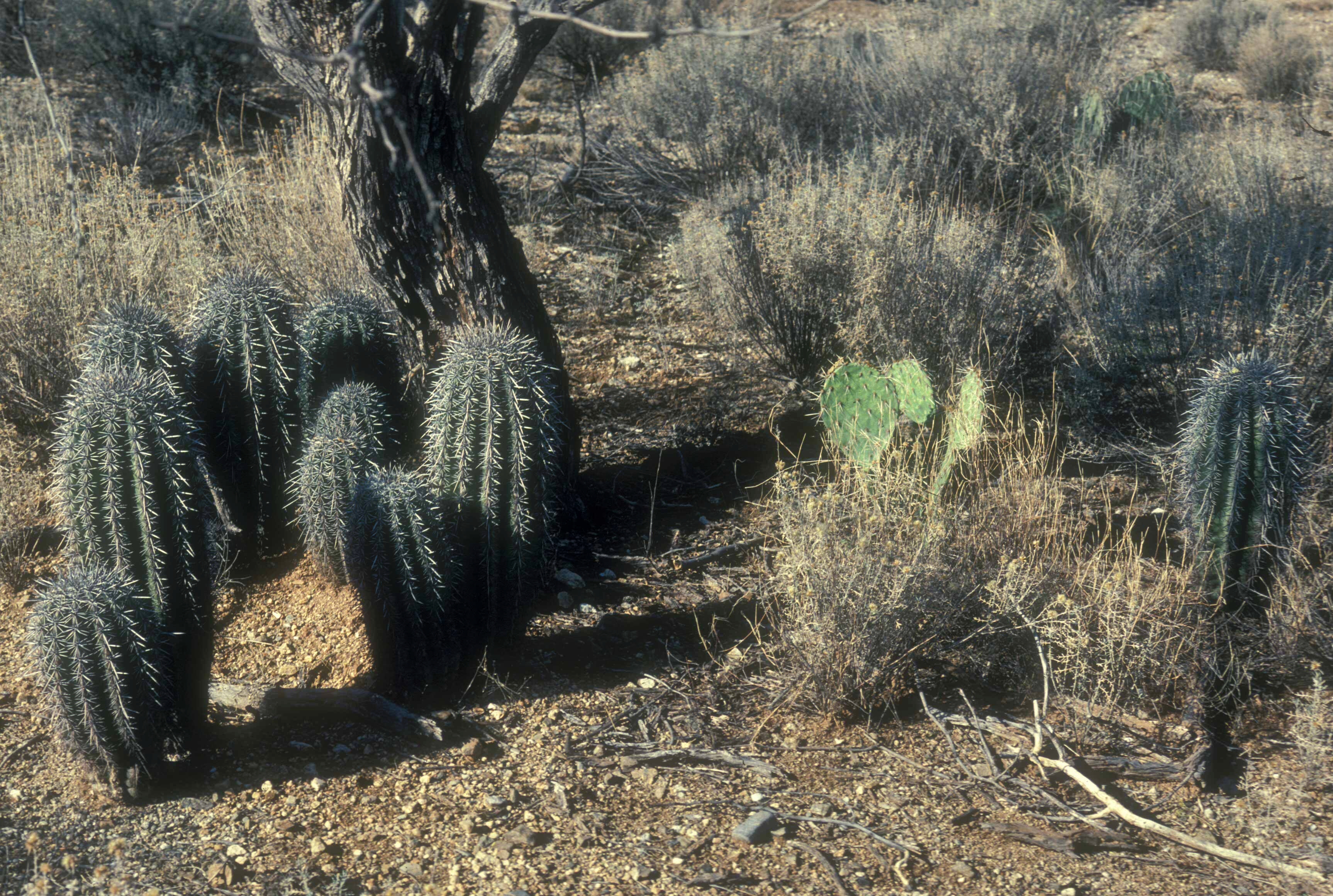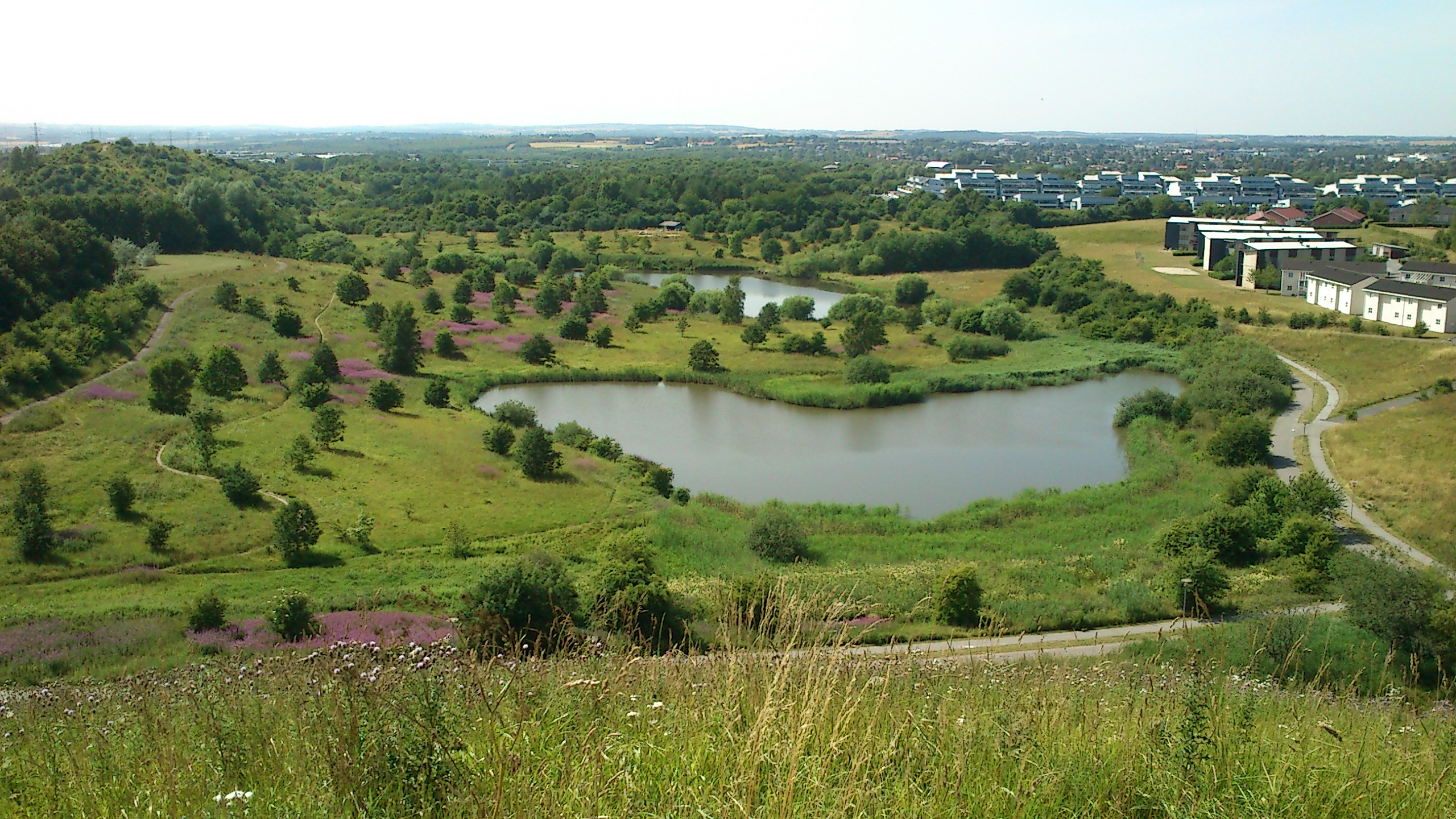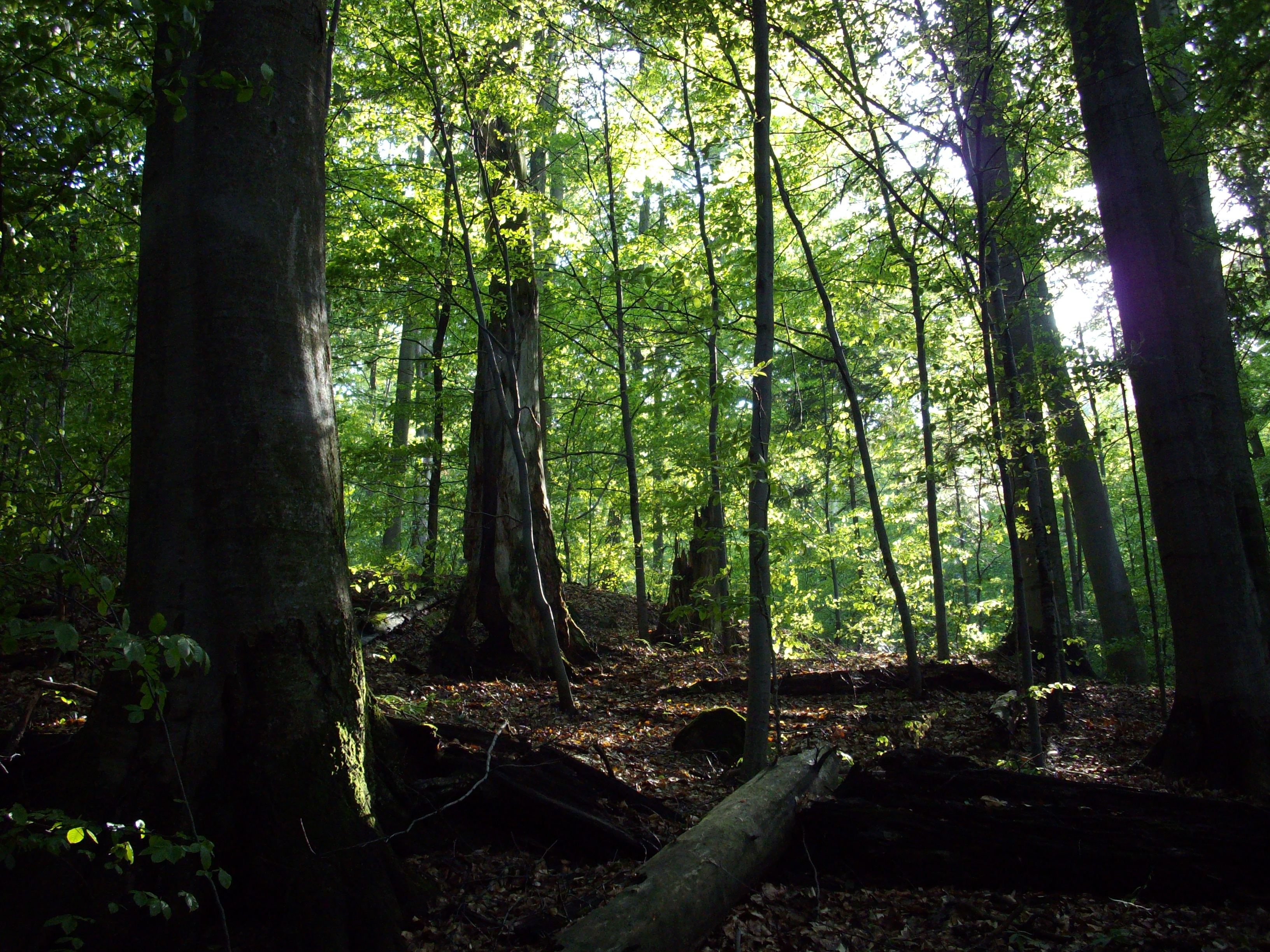|
True Skov
True Skov (True Forest) is a woodland, west of Skjoldhøjkilen in Aarhus, Denmark. True Skov is named after the small village of True and forms part of the New Forests of Aarhus. It is a relatively recent afforestation - and the largest within the region of Søhøjlandet -, raised primarily in 1994 on former agricultural fields. New trees are still being planted here occasionally and the forest is planned to cover a total of 650 ha, at some point in the future. Although located entirely within Aarhus Municipality, True Skov is administered by the State of Denmark. Nature and facilities True Skov is primarily a deciduous forest, but with conifers and pines in some sections. Alder, poplar and larch has been planted as nursing trees for the young forest. The forest holds a great variety of species, focussing primarily on native species and a number of bush and shrub species has been planted at the forest edges. A section in the western parts, known as Little America, hold ... [...More Info...] [...Related Items...] OR: [Wikipedia] [Google] [Baidu] |
True Skov (syd)
True Skov (True Forest) is a woodland, west of Skjoldhøjkilen in Aarhus, Denmark. True Skov is named after the small village of True and forms part of the New Forests of Aarhus. It is a relatively recent afforestation - and the largest within the region of Søhøjlandet -, raised primarily in 1994 on former agricultural fields. New trees are still being planted here occasionally and the forest is planned to cover a total of 650 ha, in the future. Although located entirely within Aarhus Municipality, True Skov is administered by Directorate of State Forestry (Denmark), the State of Denmark. Nature and facilities True Skov is primarily a temperate deciduous forest, deciduous forest, but with conifers and pinus, pines in some sections. Alder, Populus, poplar and larch has been planted as nursing trees for the young forest. The forest holds a great variety of species, focussing primarily on native species and a number of bush and shrub species has been planted at the forest edge ... [...More Info...] [...Related Items...] OR: [Wikipedia] [Google] [Baidu] |
Pinus
A pine is any conifer tree or shrub in the genus ''Pinus'' () of the family Pinaceae. ''Pinus'' is the sole genus in the subfamily Pinoideae. The World Flora Online created by the Royal Botanic Gardens, Kew and Missouri Botanical Garden accepts 187 species names of pines as current, together with more synonyms. The American Conifer Society (ACS) and the Royal Horticultural Society accept 121 species. Pines are commonly found in the Northern Hemisphere. ''Pine'' may also refer to the lumber derived from pine trees; it is one of the more extensively used types of lumber. The pine family is the largest conifer family and there are currently 818 named cultivars (or trinomials) recognized by the ACS. Description Pine trees are evergreen, coniferous resinous trees (or, rarely, shrubs) growing tall, with the majority of species reaching tall. The smallest are Siberian dwarf pine and Potosi pinyon, and the tallest is an tall ponderosa pine located in southern Oregon's Rogue Riv ... [...More Info...] [...Related Items...] OR: [Wikipedia] [Google] [Baidu] |
Cross-country Skiing
Cross-country skiing is a form of skiing where skiers rely on their own locomotion to move across snow-covered terrain, rather than using ski lifts or other forms of assistance. Cross-country skiing is widely practiced as a sport and recreational activity; however, some still use it as a means of transportation. Variants of cross-country skiing are adapted to a range of terrain which spans unimproved, sometimes mountainous terrain to groomed courses that are specifically designed for the sport. Modern cross-country skiing is similar to the original form of skiing, from which all skiing disciplines evolved, including alpine skiing, ski jumping and Telemark skiing. Skiers propel themselves either by striding forward (classic style) or side-to-side in a skating motion (skate skiing), aided by arms pushing on ski poles against the snow. It is practised in regions with snow-covered landscapes, including Europe, Canada, Russia, the United States, Australia and New Zealand. Competiti ... [...More Info...] [...Related Items...] OR: [Wikipedia] [Google] [Baidu] |
Forestry
Forestry is the science and craft of creating, managing, planting, using, conserving and repairing forests, woodlands, and associated resources for human and environmental benefits. Forestry is practiced in plantations and natural stands. The science of forestry has elements that belong to the biological, physical, social, political and managerial sciences. Forest management play essential role of creation and modification of habitats and affect ecosystem services provisioning. Modern forestry generally embraces a broad range of concerns, in what is known as multiple-use management, including: the provision of timber, fuel wood, wildlife habitat, natural water quality management, recreation, landscape and community protection, employment, aesthetically appealing landscapes, biodiversity management, watershed management, erosion control, and preserving forests as " sinks" for atmospheric carbon dioxide. Forest ecosystems have come to be seen as the most important componen ... [...More Info...] [...Related Items...] OR: [Wikipedia] [Google] [Baidu] |
Nursing Trees
A nurse tree is a larger, faster-growing tree that shelters a smaller, slower-growing tree or plant. The nurse tree can provide shade, shelter from wind, and protection from animals that would feed on the smaller plant and significant changes in temperature. Fallen leaves from the nurse tree fertilize the ground underneath creating nutrient-rich soil for the saplings and vegetation beneath. Some nurse trees act as Nitrogen-fixing agents in the soil. The nurse tree relationship occurs both naturally and via human intervention. Examples The Norway spruce (''Picea abies'') and larch (''Larix'') can function as nurses for hardwoods. In the Sonoran Desert, Palo Verde, ironwood and mesquite trees serve as nurse trees for young saguaro cacti The saguaro (, ) (''Carnegiea gigantea'') is a tree-like cactus species in the monotypic genus ''Carnegiea'' that can grow to be over tall. It is native to the Sonoran Desert in Arizona, the Mexican state of Sonora, and the Whipple Mountain ... [...More Info...] [...Related Items...] OR: [Wikipedia] [Google] [Baidu] |
Larch
Larches are deciduous conifers in the genus ''Larix'', of the family Pinaceae (subfamily Laricoideae). Growing from tall, they are native to much of the cooler temperate northern hemisphere, on lowlands in the north and high on mountains further south. Larches are among the dominant plants in the boreal forests of Siberia and Canada. Although they are conifers, larches are deciduous trees that lose their needles in the autumn. Etymology The English name Larch ultimately derives from the Latin "larigna," named after the ancient settlement of Larignum. The story of its naming was preserved by Vitruvius: It is worth while to know how this wood was discovered. The divine Caesar, being with his army in the neighbourhood of the Alps, and having ordered the towns to furnish supplies, the inhabitants of a fortified stronghold there, called Larignum, trusting in the natural strength of their defences, refused to obey his command. So the general ordered his forces to the assault. In ... [...More Info...] [...Related Items...] OR: [Wikipedia] [Google] [Baidu] |
Populus
''Populus'' is a genus of 25–30 species of deciduous flowering plants in the family Salicaceae, native to most of the Northern Hemisphere. English names variously applied to different species include poplar (), aspen, and cottonwood. The western balsam poplar ('' P. trichocarpa'') was the first tree to have its full DNA code determined by DNA sequencing, in 2006. Description The genus has a large genetic diversity, and can grow from tall, with trunks up to in diameter. The bark on young trees is smooth, white to greenish or dark gray, and often has conspicuous lenticels; on old trees, it remains smooth in some species, but becomes rough and deeply fissured in others. The shoots are stout, with (unlike in the related willows) the terminal bud present. The leaves are spirally arranged, and vary in shape from triangular to circular or (rarely) lobed, and with a long petiole; in species in the sections ''Populus'' and ''Aigeiros'', the petioles are laterally flattened, s ... [...More Info...] [...Related Items...] OR: [Wikipedia] [Google] [Baidu] |
Alder
Alders are trees comprising the genus ''Alnus'' in the birch family Betulaceae. The genus comprises about 35 species of monoecious trees and shrubs, a few reaching a large size, distributed throughout the north temperate zone with a few species extending into Central America, as well as the northern and southern Andes. Description With a few exceptions, alders are deciduous, and the leaves are alternate, simple, and serrated. The flowers are catkins with elongate male catkins on the same plant as shorter female catkins, often before leaves appear; they are mainly wind-pollinated, but also visited by bees to a small extent. These trees differ from the birches (''Betula'', another genus in the family) in that the female catkins are woody and do not disintegrate at maturity, opening to release the seeds in a similar manner to many conifer cones. The largest species are red alder (''A. rubra'') on the west coast of North America, and black alder (''A. glutinosa''), native ... [...More Info...] [...Related Items...] OR: [Wikipedia] [Google] [Baidu] |
Conifers
Conifers are a group of cone-bearing seed plants, a subset of gymnosperms. Scientifically, they make up the division Pinophyta (), also known as Coniferophyta () or Coniferae. The division contains a single extant class, Pinopsida. All extant conifers are perennial woody plants with secondary growth. The great majority are trees, though a few are shrubs. Examples include cedars, Douglas-firs, cypresses, firs, junipers, kauri, larches, pines, hemlocks, redwoods, spruces, and yews.Campbell, Reece, "Phylum Coniferophyta". Biology. 7th. 2005. Print. P. 595 As of 1998, the division Pinophyta was estimated to contain eight families, 68 genera, and 629 living species. Although the total number of species is relatively small, conifers are ecologically important. They are the dominant plants over large areas of land, most notably the taiga of the Northern Hemisphere, but also in similar cool climates in mountains further south. Boreal conifers have many wintertime adaptations. The ... [...More Info...] [...Related Items...] OR: [Wikipedia] [Google] [Baidu] |
Skjoldhøjkilen
Skjoldhøjkilen is a recreational and natural site, in the district of Brabrand in the western part of Aarhus in Denmark. It stretches westwards from Hasle Hills, like a wavy green strip of meadows, small lakes and woodlands. It is 3.5 km long and just as Hasle Hills, it is administered by the self-governing institution 'Hasle Bakker'. Reconstruction The landscape and nature of Skjoldhøjkilen was recently restored and recreated in a series of five construction projects finished in 2005. The projects comprised afforestations, restoration of the stream of Voldbækken, construction of multipurpose rainwater reservoirs, and various road constructions. As a consequence, Skjoldhøjkilen now constitutes a connected woodland area with the newly raised forest of True Skov to the west, thereby constituting a large green wedge of nature cutting its way into the city from the countryside. This is all part of the implementation of Aarhus Municipality's agenda "Aarhus surrounded by ... [...More Info...] [...Related Items...] OR: [Wikipedia] [Google] [Baidu] |
Temperate Deciduous Forest
Temperate deciduous or temperate broad-leaf forests are a variety of temperate forest 'dominated' by trees that lose their leaves each year. They are found in areas with warm moist summers and cool winters. The six major areas of this forest type occur in the Northern Hemisphere: North America, East Asia, Central and Western Europe (except Brittany, Cornwall, Wales, Ireland and western Scotland), Denmark, southern Sweden, southern Norway and in the southern hemisphere in Patagonia (Chile and Argentina). Temperate evergreen forests occur in Australasia, New Zealand and southern South America (except for some areas in Chile and Argentina where there are deciduous forests), they are not deciduous as their northern-hemisphere equivalents. Examples of typical trees in the Northern Hemisphere's deciduous forests include oak, maple, basswood, beech and elm, while in the Southern Hemisphere, trees of the genus ''Nothofagus'' dominate this type of forest. They are also bound to receive hea ... [...More Info...] [...Related Items...] OR: [Wikipedia] [Google] [Baidu] |
Directorate Of State Forestry (Denmark)
The Directorate of State Forestry ( da, Direktoratet for Statsskovbruget) was created by Law 134 on May 13, 1911. It replaced the previous ''overførsterinspektorater'' and forest steward districts. Its duties consisted primarily of management of the Danish state forests. On June 19, 1975, the Directorate of State Forestry became the Forest Service ( da, Skovstyrelsen), which in 1987 changed its name to the Forest and Nature Agency ( da, Skov- og Naturstyrelsen). See also * Danish Forest and Nature Agency The Danish Nature Agency ( Danish: ''Naturstyrelsen'') is part of the Ministry of Environment ( da, Miljøministeriet), and deals with a number of tasks in nature conservation and forestry. In addition, the agency is in charge of operation and admi ... {{DEFAULTSORT:Directorate Of State Forestry (Denmark) Nature conservation in Denmark Government agencies of Denmark Ministries established in 1911 Defunct forestry agencies ... [...More Info...] [...Related Items...] OR: [Wikipedia] [Google] [Baidu] |
.jpg)







